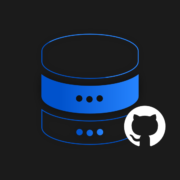
GitHub Disaster Recovery and GitHub Restore – Scenarios & Use Cases
What is the use of backup if there is no way to restore your crucial data? Actually, backup exists only for data accessibility and availability – so to say, its possibility of recovery. And nowadays GitHub takes the leading position among other git hosting services that the DevOps teams choose. Well, you may ask “why not to use the recovery script?” Yes, it is possible but it is not a panacea. So, imagine how devastated you could feel when you see that GitHub recovery script is not working. Thus, it is better to have your real working GitHub disaster recovery software which you can test on daily basis and which will definitely guarantee your business continuity.
What can potentially threaten your GitHub repository and metadata?
To realize how important Disaster Recovery software for GitHub data really is, you need to know what can endanger your data.
So, in which situations GitHub recovery is a must?
- Human mistakes – accidental or intentional,
- GitHub infrastructure outage,,
- Your on-premise infrastructure downtime,
- Security and insider threats, such as unauthorized access, bad actor’s activity, ransomware,
- Natural Disasters, such as fire, floods, and earthquakes.
Make your ideal GitHub backup plan
Depending on the situation you will act a little bit differently, but the most principal thing here is your proper GitHub backup plan. Let me remind you once again if there is no backup, there is no recovery. So, what your ideal GitHub backup plan should include making your GitHub restore as smooth as possible? It should definitely give you the possibility to:
- have infinite retention (so you can recover data from any point in time)
- implement the 3-2-1 backup rule (so possibility to store copies in many independent storages, cloud and local)
- apply GFS (Grandfather-father-son) rotation scheme for faster copies and better storage capacity,
- encryption (AES, with your own key, in-flight and at rest)
- ransomware protection – it’s a must!
There are many other features we could enlist, but our topic now is recovery. Thus, we focus only on those which make your GitHub Disaster Recovery possible.
GitHub restore – what are the options?
We have already mentioned that there can be a lot of situations when you need to react fast and recover your data to continue your team’s work without delay. First, let’s explain some GitHub restore definitions, and then we will make a deep dive into Disaster Recovery scenarios and use cases.
One of the most popular problems that happen during work are human mistakes. We are not robots and tiredness, inattentiveness can lead to some errors. But what if we speak about the code where each sign and letter must be accurate? What if your developer is distracted and by mistake delete repository, branch or overwrites HEAD? And how about malicious insider activity? Do you know what dismissed, angry workers can do? How long will it take you to realize that someone has messed up with your repository?
Point-in-time restore – thanks to unlimited retention
But the main question is – what to do then? The answer is point-in-time restore. Usually, backup vendors offer you to restore your latest copy or – maximally, a copy from up to 365 days back. We think that point-in-time restore should enable you to restore the data from any moment you need. For example, you haven’t noticed some serious mistake in your source code and continued developing it for, let’s say, 2 months. Then, you need to restore the part of the code before changes. Well, due to our infinite retention it becomes possible – your code can “travel in time.” Moreover, you can use it to archive old, unused repositories.
So, just provide the exact date and time you want your code to be back – that’s it! No worries, you can easily continue your work, without re-writing the entire source code. It will surely save your DevOps time and your money.
Granular restore & multiple repositories restore
When it comes to the amount of data you need to restore, we give you the option of fast granular recovery – so you don’t have to restore all data in bulk. You can choose repositories and only the specific type of metadata you want to restore and speed up the process.
On the other hand, you have the option for multiple repositories restore that allows restoring a bulk of critical data at a time. Simply choose all repositories you want to restore, choose the right copy (see: point-in-time recovery above) or assign them manually and restore them to your local machine, your GitHub on-premise/cloud account, or recover cross-over to another hosting service provider and make your Disaster Recovery plan easy, fast and efficient.
GitHub Disaster Recovery – 3 scenarios and use cases
When choosing the right GitHub Disaster Recovery software for your repositories and metadata make sure that the solution is ready for any possible data loss scenario. Most of the backup vendors offer you support only in the case when GitHub is down. But there are more situations when your GitHub data can be lost. Let’s check on how GitProtect.io prepares you for every scenario possible bringing you the first true GitHub Disaster Recovery software on the market.
Scenario #1: GitHub outage – how to restore your data?
If there is a long-term downtime of the GitHub cloud infrastructure (and it happens more often than you think), you would like to quickly restore your entire GitHub ecosystem to ensure your development and business continuity. So here we offer you three options – restore to your local machine, to your GitHub on-premise instance, or use the cross-over recovery.
First of all, you can instantly restore your entire GitHub environment from the last copy or a chosen point in time to your local machine as .git. The multiple repositories restore option allows to restore all critical data in one process at once.
You can also restore your GitHub data to GitHub on-premise instance, to the same or new account.
Thus, let’s stop more precisely at cross-over recovery and application mobility. This type of restore permits you to recover the data to another git hosting service. For example, you can restore your GitHub repository and metadata to GitLab or Bitbucket accounts. All you need is an account in another git hosting platform for version control. So, just a few seconds, and your team can keep working uninterruptedly. Moreover, it’s very useful when you want to migrate GitHub to GitLab or Bitbucket.
Eliminate data loss risk and ensure business continuity with the first TRUE Disaster Recovery software for GitHub.
Scenario #2: “My infrastructure is down” – what to do?
Do you know the 3-2-1 backup rule? It’s the best practice when it comes to data protection. It states that you should have at least 3 copies on 2 different storage instances, including at least 1 in the cloud. GitProtect.io is a multi-storage system and enables you to add many, even an unlimited number of storage instances (on-premise, cloud, hybrid, or multi-cloud) and make backup replication among them. Also, regardless of the plan, you always get free GitProtect Cloud Storage to use as your default or second destination and ensure Disaster Recovery even if one of your storage is down.
Scenario #3: GitProtect.io infrastructure is down – what then?
We live from data protection – that’s why we need to be prepared for every potential outage scenario – especially the one harming our infrastructure. When our environment is down (highly impossible), we will share with you the installer of the GitProtect.io on-premise application. All you need to do is to log in, connect your storage where your copies are stored so you have access to all your backed-up data, and use all data restore and Disaster Recovery options mentioned above.
GitHub security PRO tip
It is worth saying that in any situation, it is better to restore the backup copy of your repository as a new one. Why? If you decide to overwrite the original repo, you may miss the possibility to track changes. And what if you need it for some future reference? But first of all, it is very important from the security point of view.
Want to find out more about GitHub backup, Disaster Recovery, or security tips? Dive deep into our GitHub backup best practices article!







